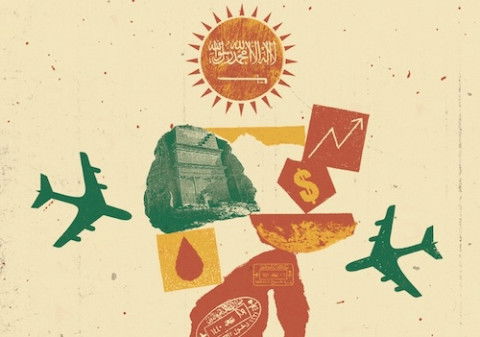Can Saudi Arabia Successfully Market Its Pre-Islamic Past After Decades Of Suppressing It?

```html
Saudi Arabia's Astonishing Transformation: From Puritanism to Tourism
A Kingdom Unveiled
Once the epitome of Islamic puritanism, Saudi Arabia has undergone a dramatic shift. Before 2017, veiled women required male guardians' permission for travel, shops shuttered during prayers, and the religious police enforced strict adherence to religious practices. Pre-Islamic history was dismissed as the "time of ignorance," and tourism was severely limited.
However, under the ascendance of Crown Prince Mohammed bin Salman (MBS), a new era has dawned. Cinemas, concert halls, and entertainment cities have sprung up, defying previous religious pronouncements. This transformation is driven by Vision 2030, an ambitious plan to diversify the Saudi economy away from oil and embrace tourism, with a surprising focus on the nation's pre-Islamic past.
The Nabataeans: From Condemned to Celebrated
Central to this cultural revival is the AlUla Oasis, home to Madain Saleh (Hegra), the second city of the Nabataean kingdom. This ancient civilization, known for its prowess in trade and unique rock-cut architecture, flourished for centuries before Roman annexation in 106 AD. The Nabataeans, described by the Greek historian Diodorus Siculus as nomadic traders, controlled lucrative trade routes for frankincense, myrrh, and other precious commodities.
Designated a UNESCO World Heritage site in 2008, Madain Saleh boasts impressive tombs and monuments carved into sandstone cliffs, showcasing the Nabataeans' cultural influence and the vibrant trade networks connecting East and West. While smaller than Petra, Madain Saleh holds immense tourism potential.
Overcoming Religious Taboos
The promotion of Madain Saleh presented a challenge. Traditionally, the site was considered cursed, with warnings against visiting the place where, according to the Quran, God punished the Thamud people for idolatry. Even the Prophet Muhammad is said to have averted his gaze while passing by.
The AlUla website now showcases a starkly different image: rock climbing, contemporary art installations, and couples strolling through the old town. The Saudi state has embraced 200,000 years of history, incorporating the Nabataeans into their national narrative.
From Cursed City to Wellness Retreat
This transformation has been gradual. Since the 1970s, archaeology has slowly entered the Saudi curriculum, with museums displaying pre-Islamic artifacts. The taboo against visiting Madain Saleh has loosened, culminating in its inclusion in the television show "History of the Prophets."
The current presentation of AlUla bears the distinct mark of Western influence, with images of wellness centers offering sound baths by Nabataean temples and counselling sessions with Californian therapists, juxtaposing ancient history with modern wellness trends.
This modernization contrasts sharply with the views of some conservative scholars like Sheikh Muhammad Saleh al-Munajjid, who condemns practices like yoga as idolatry.
A New National Narrative
The transformation of Madain Saleh into a tourist attraction is part of a broader project. International tourism and sport are tools to reduce dependence on oil and Wahhabi puritanism, all while bolstering the legitimacy of the ruling family.
The Nabataeans, once condemned, now serve as an object lesson. As Allamah Tabatabaii, a renowned scholar, preached, the relics of past civilizations offer valuable lessons for future generations. This aligns with the current narrative emphasizing the crown prince's unique leadership and the kingdom’s importance for international stability.